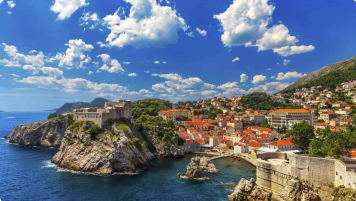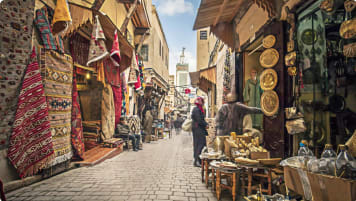Discovering Croatia's History
Discovering Croatia’s History: From the State of Illyria to Croatia as an Independent State Croatia’s long history and natural beauty lure tourists from all over the world. Croatia has a very long history. Human presence in…
15 Jul 24 · 14 mins read

Discovering Croatia’s History: From the State of Illyria to Croatia as an Independent State
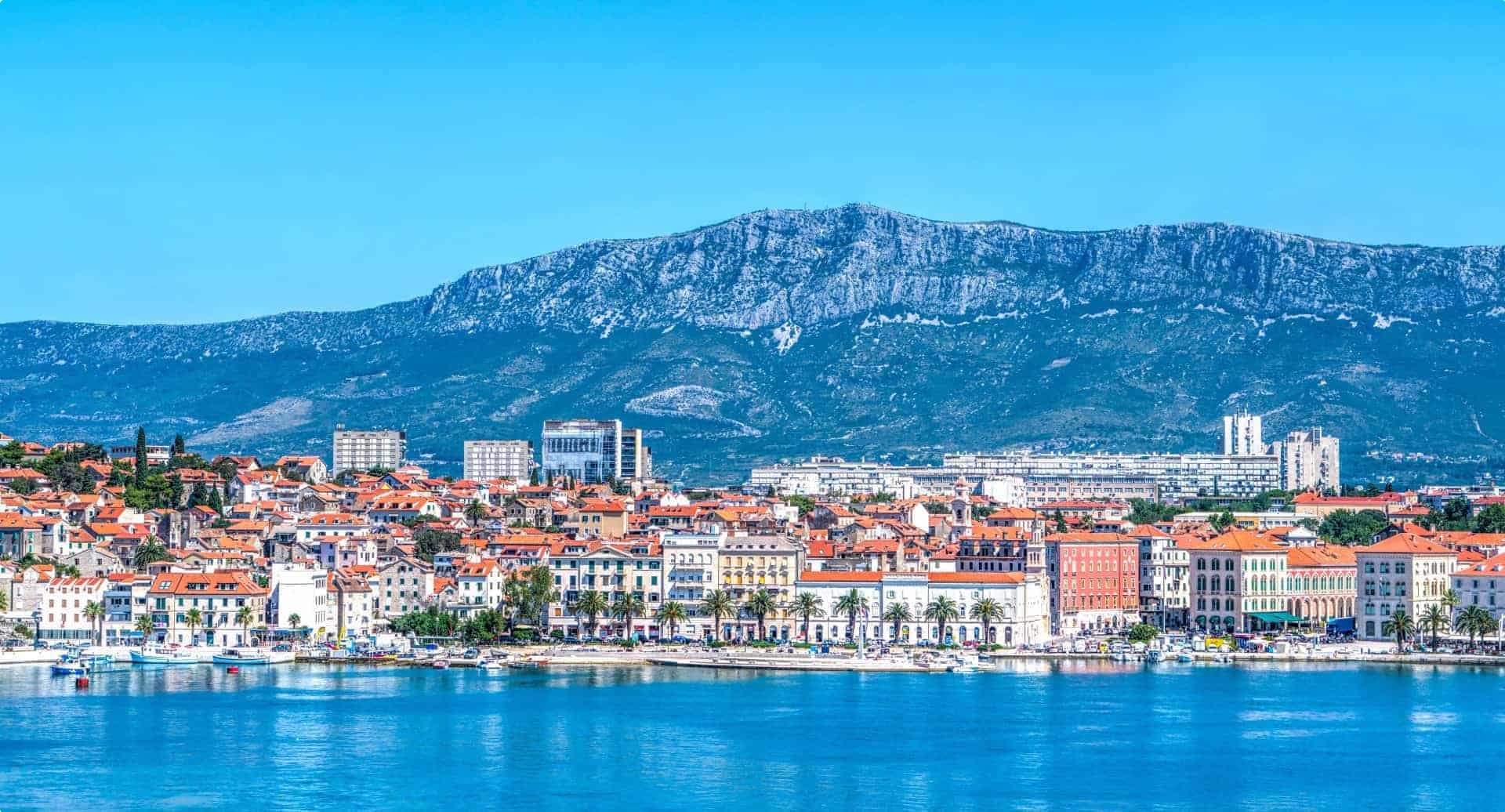
Croatia has a very long history. Human presence in the country dating back to the middle-Palaeolithic (50,000 BC) has been recorded in the 19th century with the discovery of “Krapina Man”.
Around 1200 BC, Indo-European tribes, collectively called the Illyrians after the name of the Balkan region where they settled, traded amber with other Mediterranean people and traders in Europe. This was followed by centuries of struggle with foreign powers, the nation of Croatia rising and falling with the empires that held it within their grasp.
This article traces Croatia’s history from its beginnings in the Illyrian settlements in 1200 BC, through the years of invasion and conflict, to finally its full independence in the 20th century. It is intended as background reading for Odyssey Traveller’s History of Croatia small group tour for mature and senior travellers.
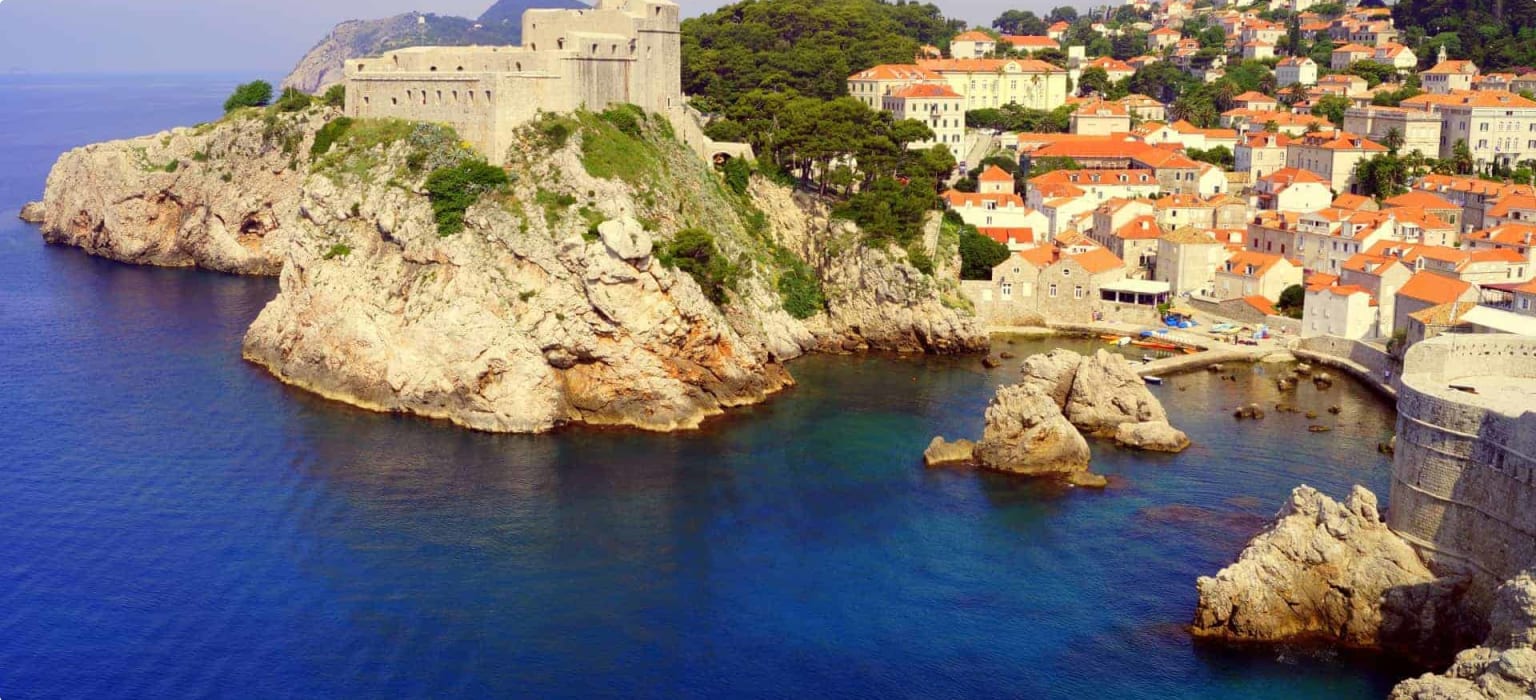
Croatia as an ‘Ancient Nation, Young Nation State’
Croatia is a small country located in the northwestern part of the Balkan Pensinsula. It has a long coastal strip along the Adriatic Sea. On land it is bordered by Slovenia, Hungary, Serbia, Bosnia and Herzegovina (with which it shares the longest border), and Montenegro.
The present republic is composed of:
- Croatia-Slavonia (located in the upper arm of the country);
- Istria (on the Istrian Peninsula on the northern Adriatic coast); and
- Dalmatia (the coastal strip)
Those who have yet to visit this country have most probably already seen its beauty onscreen. Several Croatian locations were used in the wildly popular HBO series, Game of Thrones, with the city of Dubrovnik becoming King’s Landing, the capital of the Seven Kingdoms in the Game of Thrones universe.
In his introduction to his book Croatia: Travels in Undiscovered Country (2003), Croatian Canadian scholar Dr. Tony Fabijancic writes:
Croatia (Hrvatska) is an ancient nation, yet a very young nation state. Once a formidable kingdom under Tomislav in the tenth century, a naval power in the sixteenth and seventeenth, and an awakening national entity in the nineteenth, it had to endure a thousand years of foreign meddling, subjugation, incursions, and outright wars before being recognized in 1992 as a distinct entity.
Origins, the Illyrians, Celts, and Greeks
The human presence in Croatia dates back to the middle Palaeolithic, with human remains found at Krapina in the north of Croatia in the early 19th century dating back to the Neanderthal period, some 130,000 years ago. The earliest evidence of Homo sapiens in Croatia comes from the Vela Spila cave on the island of Korčula, which was inhabited continuously for some 18,000 years. Here human remains, tools and artefacts, ceramics, ornaments, and decorative items were all found.
During the Neolithic epoch, Croatia served as an important crossroads of cultures, with the Danube valley around Vukovar supporting a sophisticated population of agriculturalists. Ceramics from this period include the Vinkovci Orion, a decorated pot dated to around 2600 BC.
Other prehistoric cultures have also been found in Croatia. The richest site is probably Vucedol, near Vukovar, where the Neolothic ‘Vucedol Dove’ was found – a ceramic vessel shaped like a bird, dating back to the early Bronze age, around 3000 BCE.

Around 1200 BC, Indo-European tribes settled on the Pannonian Plain, on the large islands, and along the coast. The tribes were known by different names such as the Istrians, Liburnians, Dalmatians, Japods depending on where they settled, but the area was known collectively as Illyria. They had an urbanised culture, trader ambers, and had dealings with other Mediterranean peoples and northern European traders.
In the 4th century BC, the Scordisci tribe of the Celts sailed down the River Danube from Gaul (a region in Western Europe including present-day France), and the Greeks established isolated colonies in the Dalmatian region, including Issa (Vis), Pharos (Stari Grad, on the island of Hvar), and Trogir. The Celts eventually settled in northern Croatia and mixed with the Illyrians and conquered some of the Greek colonies to fold them into the state of Illyria.
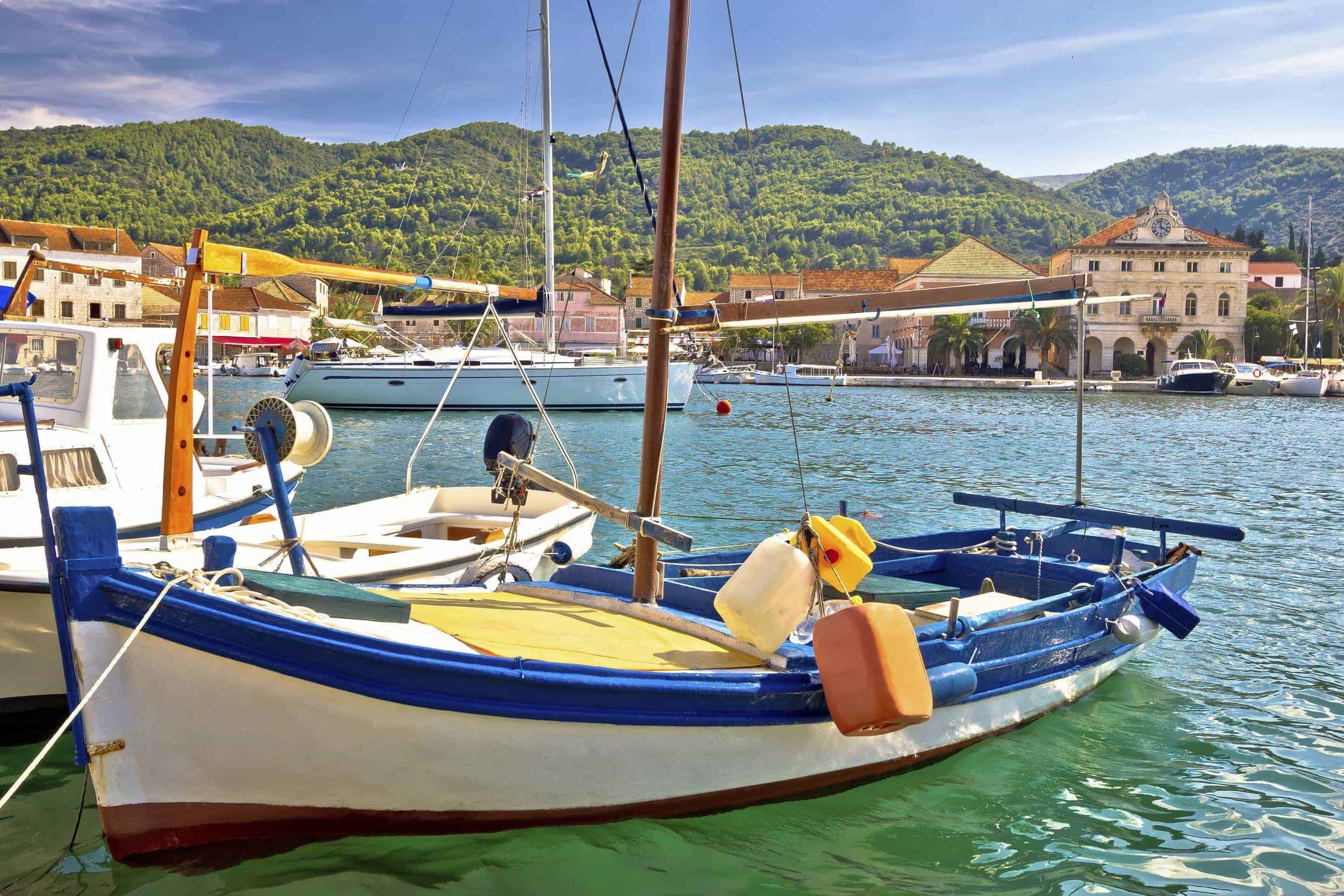
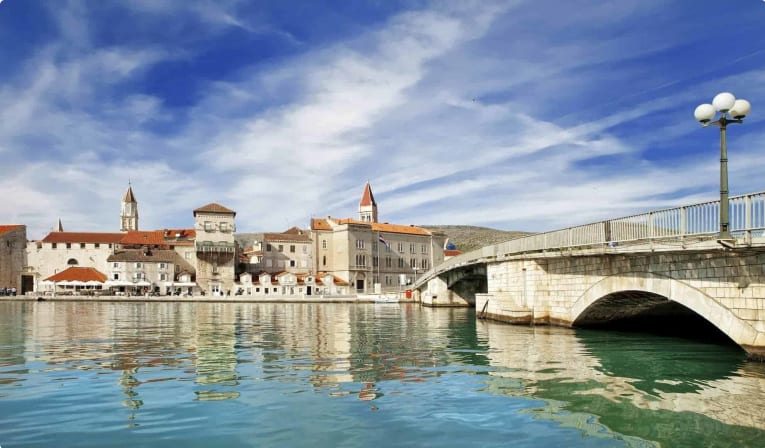
The Romans
Illyria had frequent clashes with the Romans, the first triggered by alleged Dalmatian attacks on Roman merchant ships. The first battle took place in 229 BCE, when Teula, the queen of the Illyrians, put to death a Roman ambassador who had tried to persuade her to put an end to the acts of piracy. Roman revenge was swift, and it led to the fall of Illyria to Roman conquest in the 2nd century BC, forcing Illyrians to pay taxes.
The Illyrians continued to push back against the invasion in the many years that followed, however, until their final defeat in 12 AD. At this point, the Illyrian defences were dismantled, and the Balkans became part of the Roman Empire as the province of Illyricum. This composed of Dalmatia in the south, corresponding roughly to modern-day northern Albania; Montenegro, Bosnia and Herzegovina, and coastal Croatia; and Pannonia in the north, corresponding to northern Serbia, northern Croatia, and the western region of Hungary. Illyricum’s capital was Salona (near modern-day Split in Croatia).
The inhabitants of the region became Roman citizens, with Illyria even producing several emperors, the most famous of which was Diocletian, born in Dalmatia and who ruled as emperor from 284 to 304, stabilising the Empire after the near-anarchy (involving a staggering 26 claimants to the imperial throne) of the 3rd century.

The Romans built towns in the Balkans connected by roads wide enough for marching armies. A huge network of roads in the region linked the towns and followed the rivers Sava, Drava, and Danube. The roads made it easier for the Romans to move their legions and for the emperors to travel in the province.
The towns were built in the style of Roman towns, complete with forums, triumphal arches, thermal spas, aqueducts, and amphitheatres. The ruins of these monuments can still be seen in Croatia today, such as the aqueduct and Roman ruins of Salona, the remnants of Diocletian’s palace in Split (which was listed as a UNESCO World Heritage Site in 1979), and the grand amphitheatre in Pula, which was built to host 25,000 spectators and mirrored the grandeur (albeit on a smaller scale) of the Colosseum in Rome.

The city of Split, Croatia at dawn, with an aerial view of Diocletian’s Palace
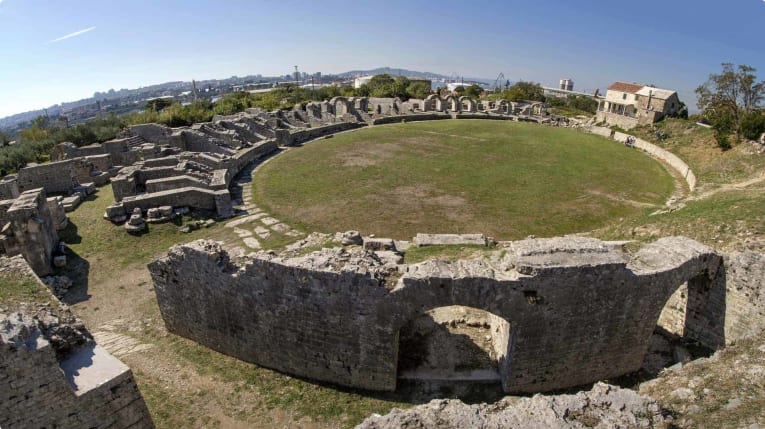

After a period of relative peace under the Romans, the region suffered from a string of foreign invasions and a seemingly unending movement of power from one invader to another. In 378, the Goths invaded Pannonia. This was only the first of a series of attacks on the Balkans by the ‘barbarian’ groups (Huns, Vandals, Visigoths, and Lombards) which greatly weakened the hold of the Romans in the region. Finally, in 476, the German-born Roman soldier Odoacer deposed Emperor Romulus Augustus and brought about the end of the Western Roman Empire.
The Slavs, the Croats, and the Franks
The beginning of the 6th century saw invasions by the nomadic Avars, followed by other Slavic tribes who destroyed Salona in 614 and settled in the countryside and in the cities they sacked. Refugees from Salona moved into Diocletian’s palace to seek shelter after their city’s destruction. the Slavs settled in the countryside or in what remained of the sacked cities. These people cultivated the land, bred livestock, and formed extended family groups.
The Byzantine emperor Heraclius reportedly enlisted the help of another Slavic tribe, the Croats, to push out the Avars. The Croats, the predecessors of Croatia’s current Slav population, settled in upper Pannonia and Dalmatia in the early 7th century. The Byzantine Empire were eventually able to retake parts of Macedonia and the Dalmatian islands. The Croats were allowed to remain in the region. Setting up territorial bases in the inland region, while the coastal cities and the islands were governed by Byzantine officials.
Toward the end of the 8th century, Charlemagne, King of the Franks, conquered Dalmatia and began a campaign to convert the Croats to Christianity, moving the Croats’ loyalty closer to the Pope in Rome and away from the power of Constantinople. After Charlemagne’s death, Dalmatia remained under the Byzantines (Duchy of Croatia) while Pannonia remained under Frankish rule (Duchy of Pannonian Croatia).
The Croat Kingdom, Hungary, and Venice
The Croats obtained autonomy from the Franks in the early 9th century, forming their own states. Tomislav, Duke of Croatia, consolidated the states and was crowned king in 925 with the blessing of Pope John X, giving birth to the Kingdom of Croatia, which also included part of Dalmatia.
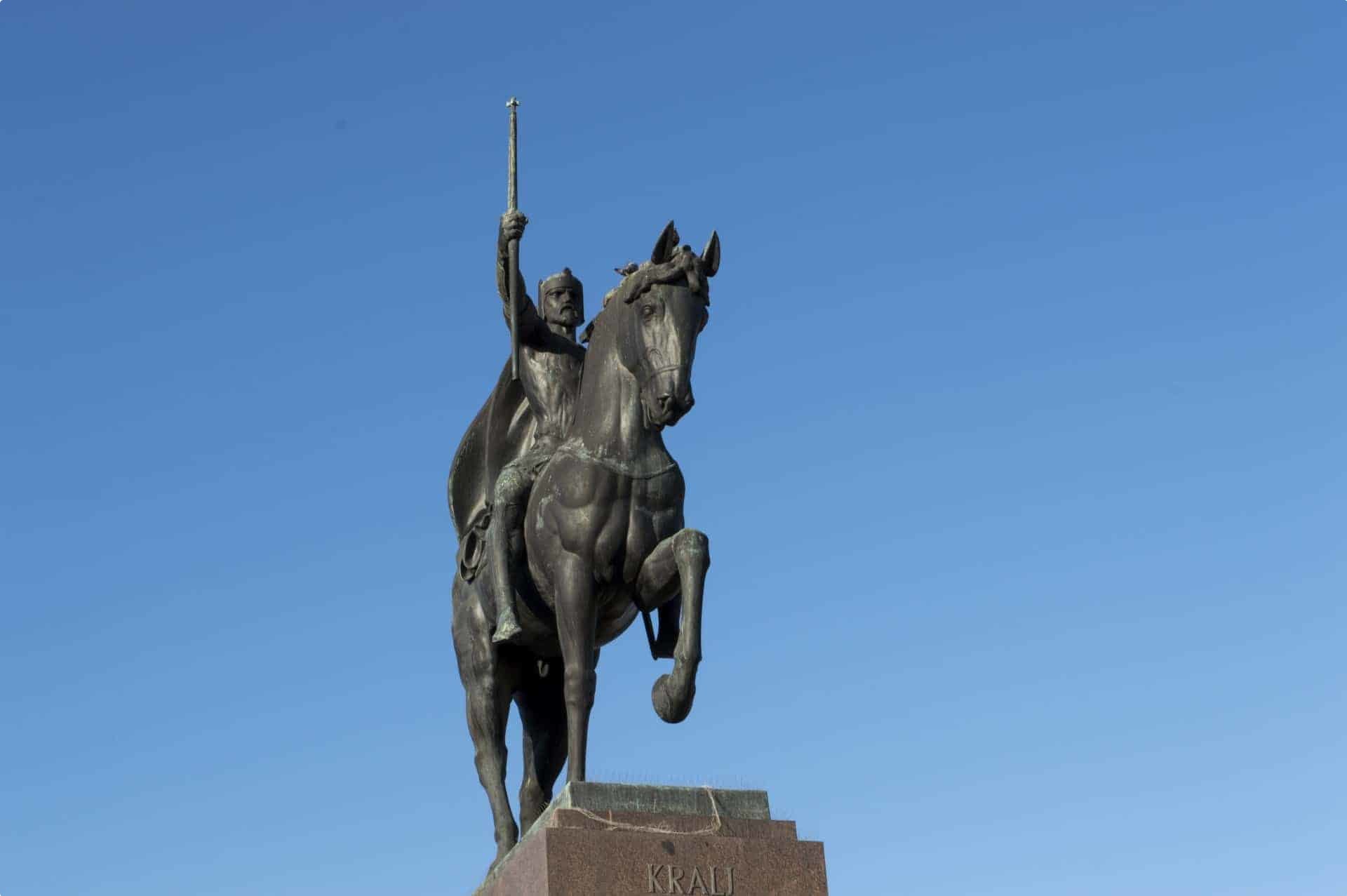
His death, in 928, was followed by years of anarchy until King Petar Kresimir IV (1058-74) came to power. Kresimir would unite Croatia by conquering the rest of the Dalmatian islands. Petar’s successor Zvonimir married the sister of the Hungarian king Ladislaus, a matrimony that opened Croatia to Hungarian invasion.
In Hungary, Ladislaus was succeeded by Koloman, who claimed succession to the throne of Croatia. In 1102, an agreement was signed, uniting Hungary and Croatia under one dynasty. For the next four centuries, the Kingdom of Croatia was ruled by the Sabor (Croatian parliament) and a Ban (viceroy or governor) appointed by the king. The state was divided into countries governed by Croatian and Hungarian nobles, but Croatia’s autonomy gradually eroded as time went on.
Venice
The islands of Istria in the Adriatic had a different fate. At the time they were under the rule of Aquileia, a Roman city in Italy. In the 13th century, some Istrian cities, which were already being used by Venice as ports for its merchant fleets, sided with the Republic of Venice for defence purposes against the Ottomans. Some cities peacefully agreed to be put under Venetian rule, but the city of Zadar fought back. Venice retaliated by employing crusaders on their way to the Holy Land to subdue the city.
It conquered Zadar, the rest of Istria, and eventually, even Dalmatia–with the exception of the independent city of Dubrovnik, then called the Republic of Ragusa, which gained independence in 1382 through a treaty with Hungary.

The old town of Dubrovnik is listed as a World Heritage Site. Travellers can visit its churches and monasteries, rebuilt after the devastation of an earthquake in 1667. The defence system built by Venice in Zadar and Šibenik (the fortress of St. Nicholas), meanwhile, is listed on the UNESCO List of World Heritage, hailed as an exceptional example of Venice’s technological and architectural prowess.
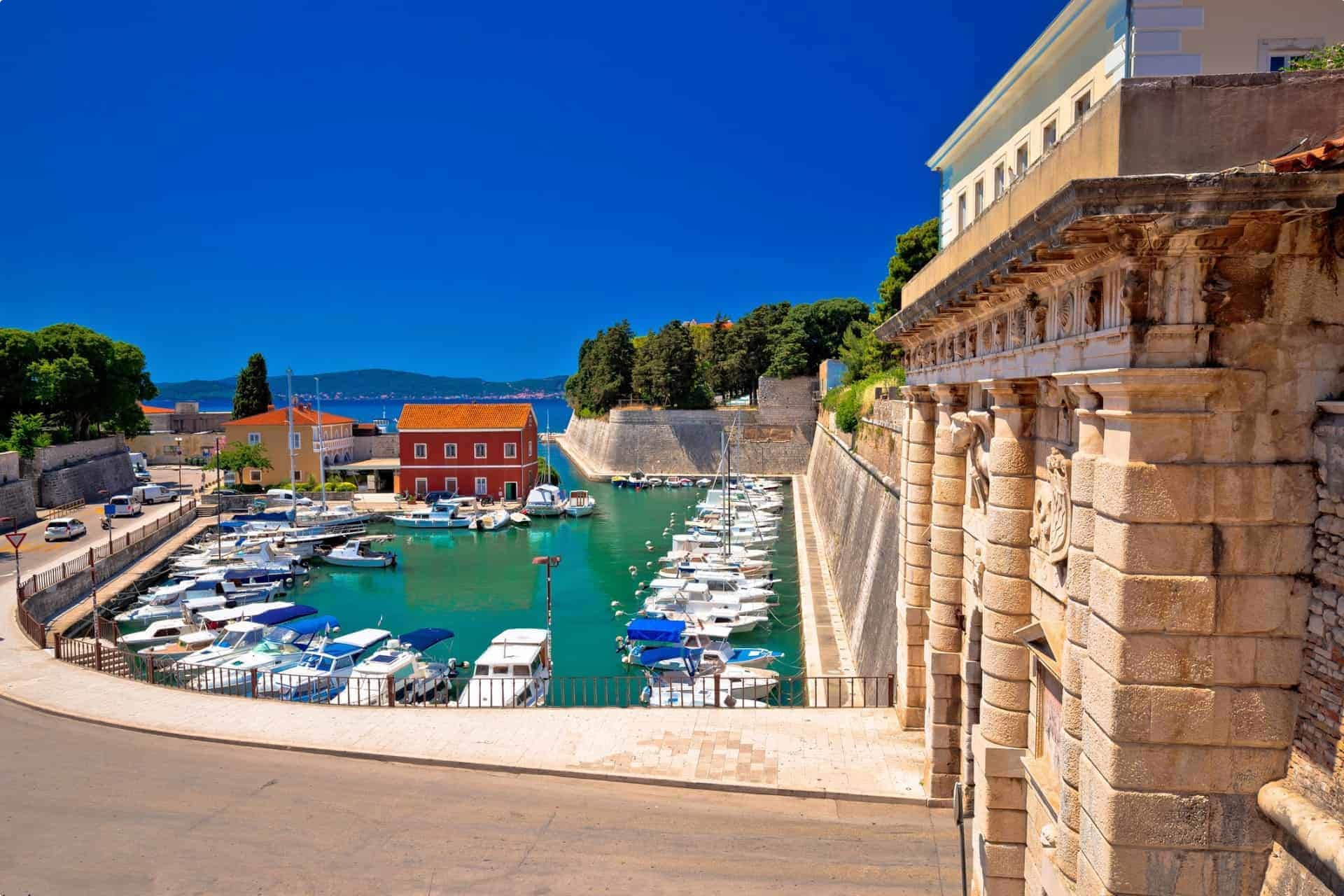
Venice ruled Dalmatia until 1797, when Venice surrendered to Napoleon Bonaparte. The Republic of Ragusa came to an end as well in 1808 when Napoleon invaded the city.
Turkish Domination
The Kingdom of Hungary, meanwhile, had experienced a prolonged period of dynastic turmoil when the house of Árpád died out after the death of Andrew III in 1301. This led to intense struggles among various contenders for the crown, culminating in Charles Robert of Anjou from the Neapolitan royal family ascending to power in 1308.
Under the Angevin dynasty with Matthew Corvinus (1458-90), the Hungarian-Croatian kingdom flourished for a long period, competing with Venice for control over the coast and Adriatic islands. However, a Turkish invasion was imminent and after the battle of Kosovo Polje in 1389, the Turks conquered nearby Bosnia and parts of Serbia.
In 1463, Sultan Mohammed II launched invasions from Croatia into Bosnia. The Croatian army suffered a significant defeat in 1493 at the battle of Krbavsko Polje. The pivotal Battle of battle of Mohács on August 29, 1526, resulted in the death of Hungarian King Louis II without heirs, paving the way for Suleiman II the Magnificent of the Ottoman Empire to conquer nearly all of Croatia and much of Hungary.
The Habsburgs
In 1525, Croatian and Hungarian nobles, troubled by the advance of the Ottoman Empire, chose Ferdinand I of the House of Habsburgs to rule what was left of the Kingdom of Croatia. In 1578, the Hapsburg monarchy then established the Military Frontier (Vojna Krajina), administered by the miliary governor of Vienna, to serve as a buffer zone against the advancing Turks. By the late 17th century, the Ottomans had been largely expelled from Croatian lands,
After Napoleon defeated Venice and Dubrovnik in the early years of the 19th century, he briefly ruled the Croatian Adriatic before it was absorbed by the Austrian Empire. At this point the region experienced a cultural rebirth, and a Croatian language was developed, over-riding regional dialects.
After 1847, when the Sabor (parliament) of Zagreb managed to proclaim Croatian as the official language and abolished feudalism, the revolt of the Hungarian people and hopes aroused by the Italian revolution in 1848 also involved Croatian political movements. Led by Croatian Colonel Josip Jelačić, the Croatians fought for autonomy, but these hopes were dashed by the Austrians. In 1868, Emperor Franz Joseph I incorporated Croatia into the Austro-Hungarian Empire.
On June 28, 1914, Gavrilo Princip, a member of an organisation (Young Bosnia) seeking an end to Austro-Hungarian rule in Bosnia and Herzegovina, assassinated Archduke Franz Ferdinand of Austria, heir presumptive to the imperial throne, and his wife, Duchess Sophie. This started a series of events that led to the First World War. The war would end with the defeat of the Central Powers, and the House of Habsburg being dismantled.
Yugoslavia
Before the end of the war in 1918, the Croatian Parliament severed ties with Austro-Hungary and joined the State of Slovenes, Croats and Serbs, composed of the Southern Slavic territories formerly ruled by the Austro-Hungarian monarchy. These were the former kingdoms of:
- Serbia and Montenegro;
- Macedonia (then controlled by Serbia);
- Bosnia and Herzegovina;
- the Austrian territory in Dalmatia and Slovenia;
- the Hungarian land north of the Danube River;
- and Croatia
A treaty signed between the Kingdom of Italy and the State of Slovenes, Croats and Serbs in 1920 allotted Istria, Zadar, and other islands to Italy.
The new multinational state faced difficulty in deciding what structure of government to use. The Serbs wanted a unitary form of government to unite its territories, but the Croats favoured a federal form in order to respect the diversity of its ethnic tribes.
The Serbian system won, and in 1921 a constitution was drafted, with power concentrated in the Serbian Karadjordjević dynasty headed by the Serbian king Peter I. Revolts broke out among the discontented Croats. These were repressed, however, and in 1929, Alexander I, who succeeded his father Peter, abolished the constitution, declared a dictatorship, and renamed the state the Kingdom of Yugoslavia (“Land of the South Slavs”).
Alexander was assassinated by a member of the Internal Macedonian Revolutionary Organisation during his visit to France in 1934. As his son was still under-aged, Alexander’s cousin Paul ruled as Prince regent. Paul stayed on the throne until 1941, when Yugoslavia was invaded and partitioned by the German-led Axis Powers. The royal family fled to London and established a government-in-exile.
Yugoslavia under Tito
Communist revolutionary leader Josip Broz Tito and the resistance movement called the Partisans liberated Yugoslavia from the Nazis at the end of the war in 1945, reuniting Yugoslavia with the territories given to Italy in World War I.
Tito followed the Soviet model and purged his government of non-communists, put opposition figures on trial, and removed the monarchy. The Federal People’s Republic of Yugoslavia was proclaimed under a new constitution in November 1945. The new federal republic was composed of Croatia, Montenegro, Serbia, Slovenia, Bosnia and Herzegovina, and Macedonia.
Yugoslavia received aid and military assistance from the West and saw changes in the Soviet Union following Stalin’s death in 1953 and the nearing end of the Cold War. Tito decided not to align himself with either bloc in order to maintain independence and to avoid being roped into a conflict between the major powers. He found like-minded statesmen in Gamal Abdel Nasser of Egypt and Jawaharlal Nehru of India. They, along with more than 20 nations, formed the nonaligned movement, which held its first official meeting in Belgrade under Tito’s sponsorship in 1961.
Tito’s communist government nationalised public utilities and large enterprises and transformed the agricultural region into an industrialised one. The state achieved remarkable growth in the 1960s, but development slowed until the federation crumbled under the discontent of the Croats and Slovenes, worsening after Tito’s death in 1980.
The Independent State of Croatia
The Berlin Wall fell in 1989 and the Soviet Union was dissolved in 1991. That same year, Croatia, Slovenia, and Macedonia voted to secede from Yugoslavia. The secessionists won by a wide margin in a national referendum, but a Serb faction supported by the Yugoslav People’s Army rebelled and started a civil war, taking over a fifth of the Croatian territory.
The Croatian Army embarked on a massive resistance campaign called Operation Storm and liberated the Serbian-controlled areas in 1995, a moment of freedom for the country after being battered by centuries of war and conflict.
Following a period of post-war recovery, Croatia joined the World Trade Organisation in 2000 and became part of the European Union in 2013. In 2015, Croatia made history by voting its first female president, Kolinda Grabar-Kitarović. At 46 years old, she was also the youngest person to assume the Croatian presidency.
The 2008 financial crisis resulted in widespread unemployment and a significant increase in emigration from Croatia. Nevertheless, in recent years the country has enjoyed a period of peace and relative prosperity.
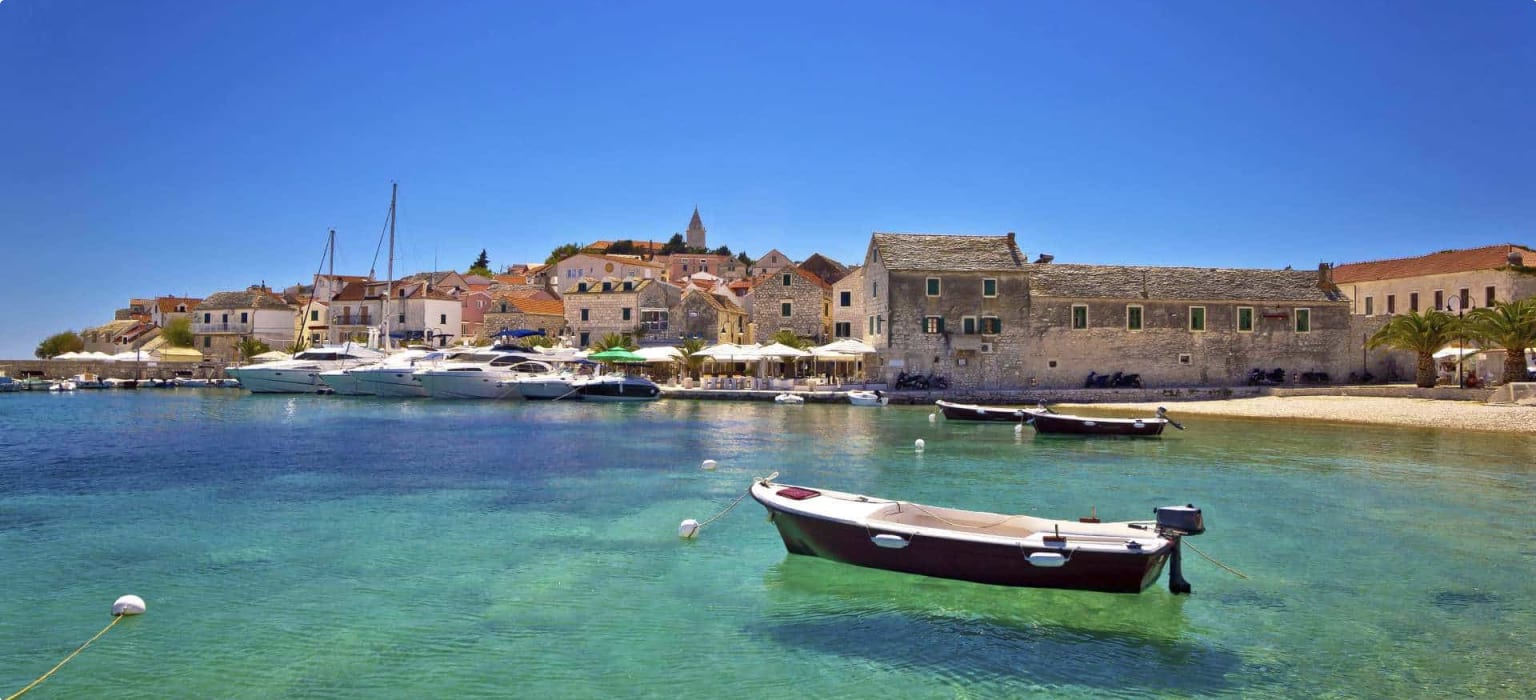
Croatia as a Tourist Destination
Croatia’s long history and natural beauty lure tourists from all over the world, and today the country’s tourism industry directly contributes 10.9% of the Croatia’s GDP. In 2017, it welcomed 18.5 million tourist arrivals in 2017, up 13% on the year.
Odyssey Traveller organises regular small-group guided tours to Croatia. Our 19-day History of Croatia tour explores the country with the services of local guides. Starting in Zagreb, the capital city, we visit Porec on the coast of the Istrian Peninsula, the island of Cres and the crystal clear waters of Plitvice Lakes National Park. We also explore the Roman and Venetian ruins of Zadar on the Dalmatian coast, Trogir’s Renaissance and Romanesque buildings, Hvar’s hilltop fortress, the gorgeous old town on the island of Korcula and end our trip in stunning Dubrovnik. Many of these must-see attractions are recognised as a UNESCO World Heritage Site.
The Croatia tour joins the Balkans small group tour, should you wish to extend your European coastal holiday. Sign up now and learn more about Croatia’s history by following its breathtaking coast and visiting its cities.
Practical Information for Tourists
Visa Requirements: Travellers from the European Union, the United States, Canada, Australia, and New Zealand do not need a visa to enter Croatia. They may stay for up to 90 days. EU citizens can enter even without a passport; they just need to bring their identity card. All third-country nationals who are holders of valid Schengen documents, as well as national visas and residence permits of Bulgaria, Cyprus, and Romania, do not require an additional (Croatian) visa for Croatia. Click here for more information.
Time Zone: Croatia is one hour ahead of Greenwich Mean Time (GMT) in winter, and two hours ahead in summer.
Weather: Along the coast, winters are mild and summers are hot and dry. Inland, summers are hot and winters are cold. On average the hottest months are July and August (around 23 degrees Celsius), and the coldest month is January (around 5 degrees Celsius).
Currency: Croatia has yet to adopt the euro. The Croatian currency is the kuna.
Medical Cost: Emergency medical services is free for countries that have signed the Health Care Convention with Croatia (which is the case with the EU including the UK, Ireland, and Italy).
Electricity: The voltage in Croatia is AC 230 V / 50 Hz.
Public Transportation: The bus is a popular form of transportation in Croatia. There are also train lines that run between large cities.
About Odyssey Traveller

Odyssey Traveller is committed to charitable activities that support the environment and cultural development of Australian and New Zealand communities. We specialise in educational small group tours for seniors, typically groups between six to 15 people. Odyssey has been offering this style of adventure and educational programs since 1983.
We are also pleased to announce that since 2012, Odyssey has been awarding $10,000 Equity & Merit Cash Scholarships each year. We award scholarships on the basis of academic performance and demonstrated financial need. We award at least one scholarship per year. We’re supported through our educational travel programs, and your participation helps Odyssey achieve its goals.
For more information on Odyssey Traveller and our educational small group tours, visit our website. Alternatively, please call or send an email. We’d love to hear from you!
Articles about Croatia published by Odyssey Traveller:
- A History of Medieval Croatia: The Definitive Guide
- The Balkans: The Influence of the Land on its People
For all the articles Odyssey Traveller has published for mature aged and senior travellers, click through on this link.
External articles to assist you on your visit to Croatia:
- Top 10 Outdoor Activities to do in Croatia
- Top 10 Foods to Try in Croatia
- Could Croatia be the most sustainable travel destination in Europe?
- Roman Ruins in Croatia
- The Best Croatia Beaches
Originally published October 3, 2018.
Updated on July 15, 2024.
Related Tours
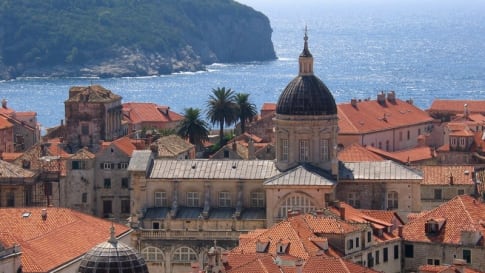
19 days
SepBalkans escorted small group tour
Visiting Albania, Bosnia and Herzegovina, Croatia
An 19 day small group tour tour takes you deep into the the Balkan Peninsula. Starting in Dubrovnik, travel through Croatia, Bosnia & Herzegovina, Serbia, Macedonia and Albania before returning to Dubrovnik.
From A$12,650 AUD
View Tour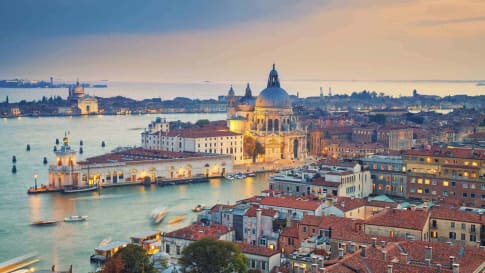
27 days
DecEuropean Cities Small Group History and Cultural Winter Tour
Visiting Albania, Croatia
An escorted tour A Journey that commences in Rome and takes in 12 destinations along its journey to Athens. This is an off season small group journey with like minded people. A small group tour across Southern Europe with local guides sharing authentic in-country authentic experiences for mature couples and solo travellers.
From A$17,295 AUD
View Tour
19 days
AugHistory of Croatia small group tours for senior travellers
Visiting Croatia
Spend 19 days touring Croatia, starting in Zagreb then travel south following the coast, where trade and the influences of the outside world made its mark. Travelling with like minded people in our small group we will explore the country in depth with great local guides and stay in key historical area such as Porec, Zagreb and Dubrovnik.
From A$14,295 AUD
View Tour